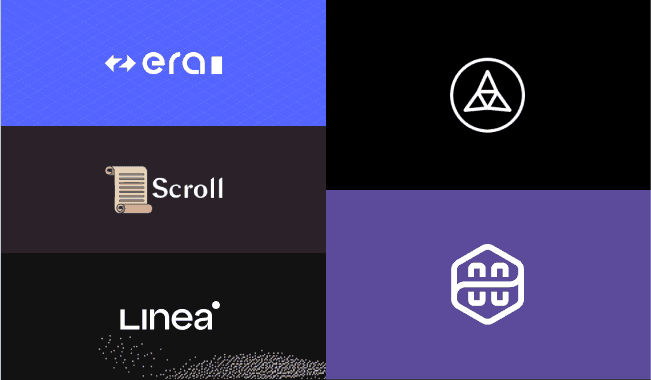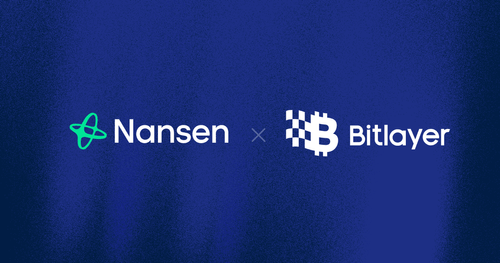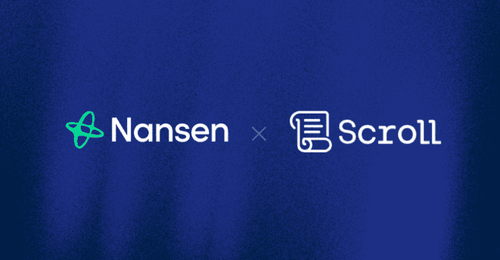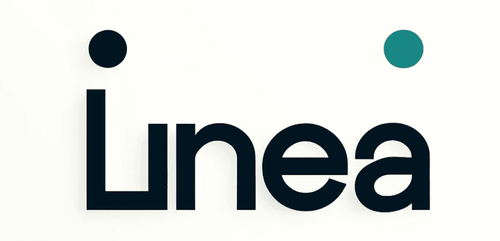Introduction
ZK-Rollups aim to increase Ethereum's scalability by processing transactions off-chain and then verifying them in batches on-chain using Zero-Knowledge Proofs (ZKPs). A key goal over the past years has been to develop zkEVMs, a ZK-Rollup that is equivalent/compatible with the Ethereum Virtual Machine (EVM).
ZkEVMs exist on a spectrum. On the one end, there are Type 1 byte-compatible zkEVMs that have fewer obstacles for Ethereum native developers but come with longer verification times. On the other end of the spectrum, there are Type 4 language-compatible zkEVMs that are more efficient in proving but require more changes in the development process. Slower proof generation time means that while the end user may see their transaction confirmed quickly via preconfirmations, it will take longer for the transaction to become 100% immutable and settled on L1 due to the time it takes to generate the proof.
Multiple projects are developing various types of zkEVM, which are summarized in the table below, using data from Crunchbase and CoinGecko. ZkSync and Polygon have recently deployed their zkEVM on mainnet, while Scroll, Linea, and Taiko are still in different stages of their testnet development.
| Name (Company) | Funding Round | Latest Raise | Total Raised | Valuation |
|---|---|---|---|---|
| zkSync (Matter Labs) | Series C | $200m | $458m | N/A |
| Polygon zkEVM (Polygon Labs) | Series A | $450m | $450m | $10b |
| Scroll (Scroll.io) | Series B | $50m | $83m | $1.8b |
| Linea (Consensys) | Series D | $450m | $725m | $7b |
| Taiko (Taiko Labs) | N/A | N/A | N/A | N/A |
It's important to take the reported numbers for Polygon zkEVM and Linea's fundraising with a grain of salt, as these figures include funds raised by their parent companies, Polygon Labs and Consensys, respectively, which have other major products besides their zkEVM.
Each zkEVM, whether in testnet or mainnet phase, comes with its own unique set of functionalities that are worth exploring, which could potentially qualify users for a future airdrop based on previous airdrop criteria.
To maximize potential rewards, it's essential to understand what defines a 'healthy' user of the chain. Keep therefore the following in mind when transacting on-chain:
- Bridged volume
- The number of transactions (but more importantly recurring transactions on a weekly or monthly basis)
- The number of contract interactions
- The interacted volume
- Contract deployment
- Voting on proposals (both on and off-chain)
This is by no means an exhaustive list, but rather some criteria that have been previously successful for users to receive a larger airdrop.
ZkSync
ZkSync, developed by Matter Labs, has two distinct networks. The first one is zkSync Lite (previously zkSync 1.0), a ZK-Rollup that has been live for more than 2 years on mainnet. It supports basic transfers, swaps, and NFTs functions but no smart contracts. The second one is zkSync Era (formerly zkSync 2.0), which is their Type 4 zkEVM that recently launched. The EVM compatibility allows for most dApps that are deployed on Ethereum to be easily ported to zkSync Era.
ZkSync has plans to introduce a token in the future, but it is expected to be issued during the decentralization phase of their sequencers, which is estimated to take place about a year from now.
As of April 4, 2023, the TVL in ZkSync Era is reported to be $50m by DefiLlama and $113m by L2BEAT. The TVL calculation methodology differs between the two sources, with L2BEAT tracking the bridged TVL and therefore the total TVL in Layer 2, while DeFiLlama focuses solely on TVL in DeFi applications. This explains the higher value reported by L2BEAT. In the following analysis, DeFiLlama's TVL will be used for reference.
DEX
Five DEXs are currently operating on zkSync Era, with a combined TVL of $47.5 million according to DeFiLlama. Listed in descending order by their TVL:
Among the above, SyncSwap is the only one that hasn’t been tokenized yet. Note that 95% of the total TVL in zkSync Era comes from DEXs.
Derivative DEX
Onchain Trade, UniDex, and Deri Protocol are all derivative DEXs that operate on the zkSync Era network and share similarities with GMX.
The platforms have a combined TVL of approximately $1.7m:
- Onchain Trade – $1.2m
- UniDex – $411k
- Deri Protocol – $72k
While all of these platforms offer perpetuals, UniDex also offers a range of other asset classes for trading, including commodities, Forex, and ETF pairs. Deri Protocol distinguishes itself by offering options in addition to perpetuals.
NFT Marketplace
The ZK-Rollup native marketplace Mint Square is now also live on zkSync Era. It is currently the only NFT marketplace and it seems that no notable NFT collections have launched yet. There is a name service collection called zkSync Name Service which is not affiliated with zkSync.
Polygon
Polygon zkEVM Mainnet Beta went live on March 27, 2023 and has a total TVL of $750k according to DeFiLlama at the time of writing. Their objective is to work towards a Type 2 classification, although currently classified as a Type 3 zkEVM. The chain is still in its infancy and only has four live dApps, including one lending protocol and three DEXs. Listed in descending order by their TVL:
- Quickswap V3 – $457k
- 0vix – $200k
- Antfarm Finance – $71k
- LeetSwap – $22k
Depositing TVL in new chains and projects involves high risks and potential loss of funds due to zkEVM-specific risk (zkSync Era), as well as project-specific risks. Therefore, caution is advised when making such investments.
Scroll
Scroll is currently in the second and final phase of its testnet before the launch of its zkEVM mainnet, which is scheduled for Q4 2023. While the zkEVM currently falls under Type 3 classification, the team plans to iterate and work towards a Type 2 in the future. Once mainnet has launched, there are plans to decentralize its provers and sequencers. There are different things to try out on the current testnet.
Although Scroll hasn’t confirmed a token yet, it is likely that a token will be issued to decentralize governance at mainnet launch or during their decentralization phase. It is also not known at this stage whether gas will be paid in ETH or their potential native token. However, it is likely that gas will be paid in ETH as this is what Polygon and zkSync have done, and Scroll is aiming to become as similar to Ethereum as possible.
Bridge
In the Scroll Alpha Testnet phase, the Goerli Testnet serves as the L1. The initial step involves acquiring testnet ETH on Goerli by using a faucet. Various faucets are available and a list can be found here. Using the Scroll Alpha – Bridge, you can then bridge the assets from the Goerli Testnet to the Scroll Alpha Testnet.
Swap & Pool
Another thing one could try out is their Uniswap V3 fork to swap tokens. It works in the same way as the original Uniswap. The current version lacks default tokens, and finding tokens can be difficult. To address this, 0xCygaar created two sample tokens without a supply cap that users can swap:
- Token A (0x155d3c078aca75355Ba6EA6f04aFd10820380d59)
- Token B (0x048EA37B714aD9E0bBb773E2bd046e5828766B23)
The acquired tokens can be pool against ETH or other tokens using the pool tab.
Mint
There is a sample NFT contract called Sample Scroll NFT (SAMPLE) available, also created by 0xCygaar. To mint an NFT from this contract, you simply need to connect your wallet, input a quantity of ten or less in the ‘mint’ field, click "write", and sign the transaction. Please note that the NFT is free to mint, comes with an unlimited mint function, and includes no metadata.
Deploy
Developers can deploy contracts on testnet using Hardhat or Foundry. A short guide on how to deploy a sample contract Lock.sol is provided by Scroll here. Alternatively, you can try to deploy the above NFT contract from the following repo or write and deploy your own contract.
Linea
Linea is aiming for a Type 2 zkEVM (EVM-equivalent) that is powered by Consensys. Linea made its former private testnet available to the public, but they haven't announced a date for the mainnet launch yet.
While there is no information about a token for Linea yet, it is still worth testing out some key functions on their testnet.
Bridge
The Linea Testnet also relies on Goerli Testnet for its L1 and therefore users need to obtain Goerli ETH first. This can be done via a faucet, just like with the Scroll Testnet. The Hop Goerli Bridge can be used to transfer tokens from the Goerli Network to the Linea Network.
Swap & Pool
The latest version of MetaMask includes the Linea Goerli test network in its list of networks so make sure to update first if needed. The testnet comes with its own fork of Uniswap where you can swap your ETH for crUSDC or other tokens. These tokens can then be pooled to provide liquidity.
Mint
Another sample NFT collection called Sample Linea zkEVM NFT (SAMPLE) was created by 0xCygaar. To mint an NFT from this collection, follow the same steps as with Scroll.
It's worth noting that the docs mention an upcoming NFT-specific testnet called Voyage, which could provide a more specialized environment for NFT development and testing.
Deploy
Learn how to deploy a smart contract on Linea using Truffle, Hardhat, or Foundry with the help of their docs. It includes a sample Token.sol contract and step-by-step instructions on how to deploy it, either through the CLI or the Truffle Dashboard.
Taiko
Taiko aims to ultimately become a Type 1 zkEVM and is co-founded by Daniel Wang, the founder and former CEO of Loopring. He also brought Brecht Devos on his team, the former Chief Architect at Loopring who manages the Zero Knowledge Research division now at Taiko.
The testnet just got upgraded from Alpha-1(Snæfellsjökull) to Alpha-2 (Askja) with more alpha and beta testnets scheduled for the rest of 2023 according to their roadmap. Mainnet is expected to go live in Q1 2024 but may be subject to change.
For each individual testnet, participants will receive a commemorative NFT as a reward for their participation.
Taiko users will pay ETH as transaction fees. Block proposers, who successfully propose blocks to the protocol, will receive the transaction fees. However, they must burn a certain amount of Taiko Token (TKO) to propose the blocks and pay Ether to Ethereum validators for their block proposals to be included in L1 blocks. When L2 blocks are verified by block provers, the protocol mints additional TKO tokens as a reward for the proofs. It remains to be seen whether TKO will also be used for governance.
Bridge
This version of the testnet runs on the Sepolia Testnet for its L1, which is included in the default list of networks of Metamask. To add the Taiko Testnet, head over to Chainlist and search for ‘Taiko’.
Three faucets are recommended for receiving Sepolia ETH which can be found here. You can receive two other test tokens, HORSE and BLL, on the Sepolia Network by choosing them from the dropdown menu and clicking the faucet button on the bridge. Don’t forget to import these two tokens to have them displayed in your wallet. You can freely transfer these assets to and from Taiko using the bridge.
Swap & Pool
Taiko comes with a fork of Uniswap V2 that allows you to swap and provide liquidity for the bridged tokens.
Run a Node or Prover
In this phase of the testnet you can run a node as described here. For those that have competitive hardware specs, it may be interesting to consider running a prover instead. Provers earn test tokens (TTKO) as a reward for each successful block proof, which can later be redeemed for USDC. A total of 50,000 USDC will be distributed to provers over a period of 300,000 blocks or approximately 69 days.
The minimum hardware recommendations are:
- 8 or 16 core CPU
- 32 GB memory
Deploy a Contract
Contracts can be deployed using Foundry with a Counter.sol contract as an example.




